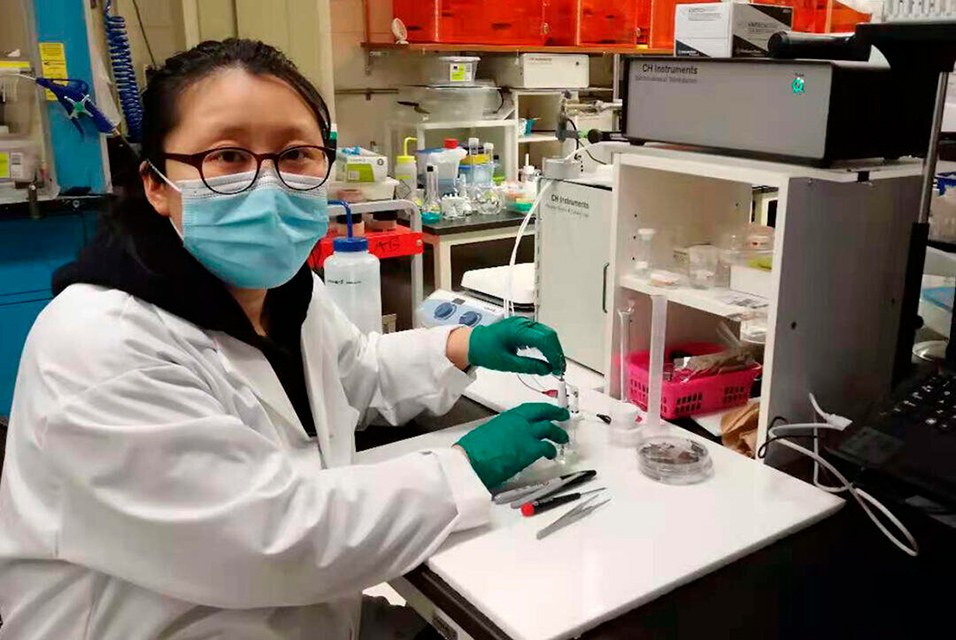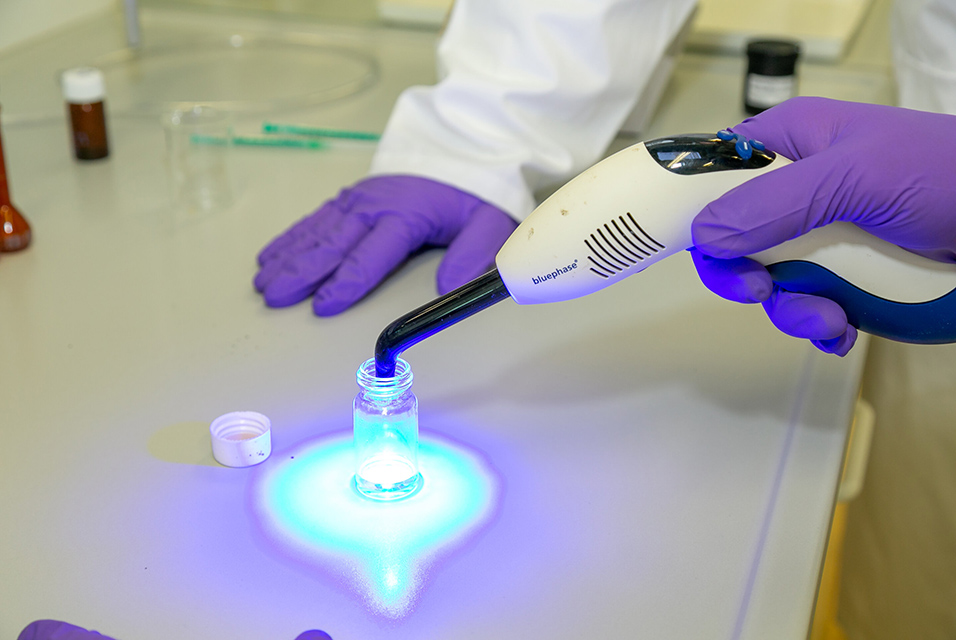WATERLOO.- Despite breakthrough diabetes research over the past century, people with diabetes still need to rely on obtaining blood samples to monitor their sugar levels. Daily glucose monitoring by tracking blood sugar levels is essential for managing both types 1 and 2 diabetes, however the current method—finger pricking—is invasive and can become burdensome with how often it needs to be done.
Since 2014, flash glucose monitoring was first introduced in Europe and this method uses a small, water-resistant sensor applied to the back of the upper arm. Compared with finger pricking monitor, this approach is more convenient but these sensors have known accuracy issues and some could fail altogether.
In the quest to eliminate invasive glucose monitoring for people with diabetes, research led by Wenyu Gao, a Ph.D. student in the Department of Chemistry at the
University of Waterloo, explores using saliva instead of blood to monitor glucose levels.
Working in the research lab of Professor Kam Tong Leung, Gao developed a prototype sensor that uses nanomaterials to test the sugar level in saliva samples. Even though saliva contains multiple components which need to be separated before testing, the accuracy of saliva-based sensor is over 95% when compared with the result of commercial blood glucose monitoring system.
Gao's prototype saliva sensor uses copper nanomaterials which are anchored on a base strip made of graphene sheet. Graphene is an inexpensive carbon material that generally does not react with other compounds. "Graphene strips are thin and flexible just like paper, so you can deposit the materials on the top and it's still flexible," says Gao. "It's a promising substrate in biosensors."
The copper nanomaterials anchored to the graphene are present in three layers, in a core-shell structure made of Cu, Cu2O, and CuO. In this saliva sensor, glucose reacts with the Cu2O layer changing the number of electrons in the copper atom. This changes the electric current proportional to the amount of glucose present, which can then be measured as a blood sugar level.
In addition to alleviating the pain associated with commercial products for obtaining blood samples, there is another advantage to developing options using nanomaterials. "Currently, commercial products are based on enzymes such as glucose oxidases, which limits the shelf life of these products to only a few months," says Gao. "Enzymes are biological catalysts that are easily affected by the changing environment, causing them to lose their activity. We want to change these products to nanomaterials, which can last longer."
The research team compared their saliva glucose sensor to other enzymatic and non-enzymatic glucose sensors currently available. They found that their non-enzymatic sensor has a wider range of glucose levels it can detect and a higher sensitivity, meaning it is able to detect smaller amounts of glucose more effectively.
In the scientific community, progress is often dependent on collaboration and partnerships, and this project is no different. As a master's student, Gao studied biosensors at the Beijing Jiaotong University. She was attracted to studying her Ph.D. with Professor Leung at the University of Waterloo through existing partnerships between the two schools, an interest in experiencing another culture and working with new scientific equipment. Here, she met Xiaojing Zhou, a visiting professor from University of Newcastle, Australia who proposed using a graphene strip as the base substrate.
"A lot of the interesting work, including Wenyu's saliva-based sensors, rely on fundamental chemistry occurring at the surface," says Professor Leung. "Two-dimensional materials like graphene are promising new nanotechnology materials that take advantage of this."
While the results of this research are promising, the potential for commercialization is still likely several years away. There are some challenges to be worked out in the method. For instance, the reaction needs to be carried out in a high pH solution to ensure that the copper nanomaterial can be oxidized. Since saliva has an approximately neutral pH, it cannot be tested directly and it first needs to be added to a base like sodium hydroxide. Also, in addition to glucose there are other compounds in saliva that the glucose needs to be separated from before the reaction can be done accurately. Nonetheless, Gao remains optimistic about the future of this approach.
"We still have a long way to go, but I think that in the future we can still solve these problems step by step."










